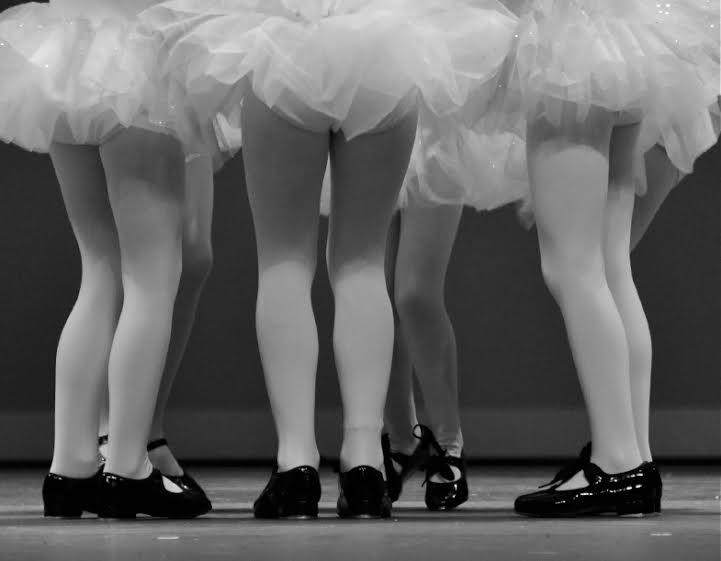It’s funny—as progressive as society is today, when we mention dancing, many of us instantly think of a girl. Of course, there are many amazing female dancers, but some of the best dancers of the past millennium have been men: from Mikhail Baryshnikov and Gene Kelly to Joaquin Cortes and Carlos Acosta! These dancers have not only refuted the stereotype that dancing is a “female” activity—they have left their marks on the art form in a big way.
Benefits of Dance Lessons for Boys
The benefit of dance lessons, in particular dance lessons for children, isn’t dependent on whether the dancer is a girl or boy. The physical aspects are still present. Despite the dancer’s gender, dance improves dexterity, strength, stamina, and overall flexibility.
Improves Physical Fitness
Any instructor knows that dance does much more than help with physical improvements; the social and psychological benefits are probably even more valuable, as they relate to real-life circumstances. The discipline it takes to learn a dance routine takes patience and dedication. These are invaluable lessons that young boys need, just as much as girls.
Those in the know understand just how rigorous and intensive dance can be. Participants gain superior conditioning, not just in terms of anaerobic capacity but also in muscular development.
Boosts Self-Confidence
Another benefit of learning to dance, and where a lot of noticeable change occurs, is in the self-confidence of a young man. Dance is essentially another form of expression; but for many young boys, properly expressing themselves is a difficult task. Mastering a routine, and being able to perform that routine in front of an audience gives these boys the confidence they need to feel comfortable in social situations.
When a child receives validation for participating in dance classes, it gradually generates the kind of confidence that can transcend extracurricular activities. To get up on stage and perform at a recital takes real courage, and dancers learn to “walk the tightrope” and face their fears on a regular basis.
Develops Motivation
One clear benefit that may not be immediately discernible, but is a significant part of dance, is competition. Boys are motivated by competition; they push themselves to be the best at what they do. Even if they don’t dance competitively, they will typically be motivated to get better. They are essentially competing with themselves— something many dance instructors can attest is a big motivator in itself.
Dance gives a sense of affirmation so deep that it can become one of the most meaningful parts of your child’s day. This is because dance classes actively engage boys to the point that they often feel excited about attendance. By constantly giving your child tangible goals to aim for, they may feel great motivation to reach for the stars.
Improves Gross Motor Skills
One of the best ways to develop a child’s gross motor skills is through early exposure to athletic activities. Dance is ideal because of how it manages to improve motor skills in so many different dimensions such as balance, coordination, strength, and proprioception.
Improves Concentration and Focus
Effective grasp of technique requires a student to listen to the instructor and then apply themselves over and over. Gaining proficiency at dance moves requires focus, as young dancers need to pay attention in order to unlock the moves that seem to flow so gracefully from professional dancers.
Encourages Self-Expression
Being able to poignantly transmit artistic intention is something available to dancers. Having advanced technique, discipline, and dedication allows a dancer to use dance itself as a language with which to communicate. This allows audiences to embrace the inner beauty of dance itself.
Improves Balance and Flexibility
Dancing requires constant shifting and moving of body weight, so a dancer must learn to stand on one leg or assume other positions that develop balance. Continual awareness of alignment allows dancers to act mindfully and the body to learn how to balance itself more effectively. Furthermore, flexibility exercises are a regular portion of any dance class.
Improves Coordination
The work that it takes to dance continually develops muscle groups and teaches children to use their muscle groups in smooth, graceful, and coordinated ways. Continually using the four limbs in different dance positions improves coordination.
Provides Personal Fulfilment
In life, we need something that gives us a special sense of purpose and meaning. For many people, dance is the answer that provides a true source of personal fulfilment. Dancing thus becomes intertwined with life itself, giving dancers an outlet for creativity and connection.
Opens Up Opportunities
While the opportunity to perform as a professional dancer is typically only given to the most gifted and blessed people, there are myriad opportunities that exist within the realm of dance. Recitals, competition teams, and other performance opportunities allow young dancers to gain exposure. The performing arts also give dancers chances to travel and broaden their horizons via shows, training, and workshops in other Canadian cities and abroad.
Choosing the Best Dance Class in Toronto for Your Son
When seeking a dance class for boys, there are several factors to consider. First, you want to make a list of several local schools and research all of them. Find out how much experience the instructors have, what kind of styles are offered, and most importantly, take the time to visit the schools so that you get a “feel” for them.
Watching classes can be valuable, as it allows you to observe the styles of dance and the method by which children are instructed. There are many different styles of dance offered to children, including ballet, jazz, hip hop, and so forth. Try to gauge if your son would be most comfortable learning a more formal style or whether they would excel at freestyling. There is no right answer, and it is fine for a child to attempt different styles until they find their ideal one.
Many studios offer a free trial or a drop-in fee for single classes. Take advantage of these opportunities in order to see how your son reacts. Some children take to dance like ducks to water; others need gentle encouragement in order to get immersed.
Making your son comfortable within the environment is important. To overcome any overt feelings of self-consciousness, it might be worthwhile to start your son off in an all-boys dance class if there is one conveniently located near you. If this is not possible, aim for a co-ed environment that includes other boys so that your son will not be the lone boy in the entire class.
Once you find a suitable dance studio, your son is free to begin the wonderful journey of self-exploration, performance, and magic that is dance.
For parents who are registering their children in dance school, it’s important not to lose sight of the true goal. Whether or not your son—or daughter—is performing at a competitive level, the focus should always be on the intrinsic benefits of the art form. Of course, most parents feel their child could be the next Gene Kelly, but the lessons your child discovers along the way will last far longer than any dance career ever will.
Performing Dance Arts is one of the leading dance studios for boys and girls in Vaughan and Toronto. Our dance programs include tap, hip hop, jazz, and ballet classes that inspire creativity, coordination and self-confidence. Contact us today for more information.



